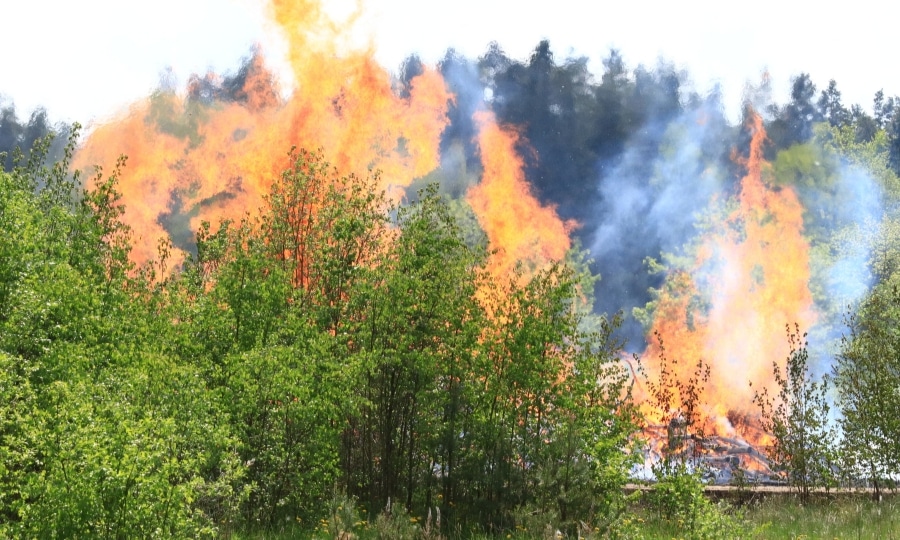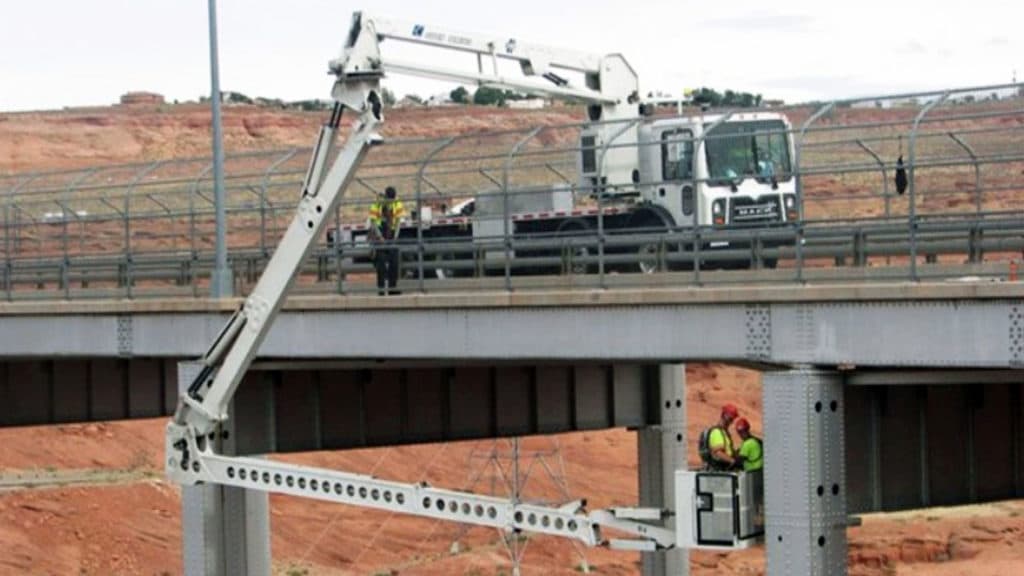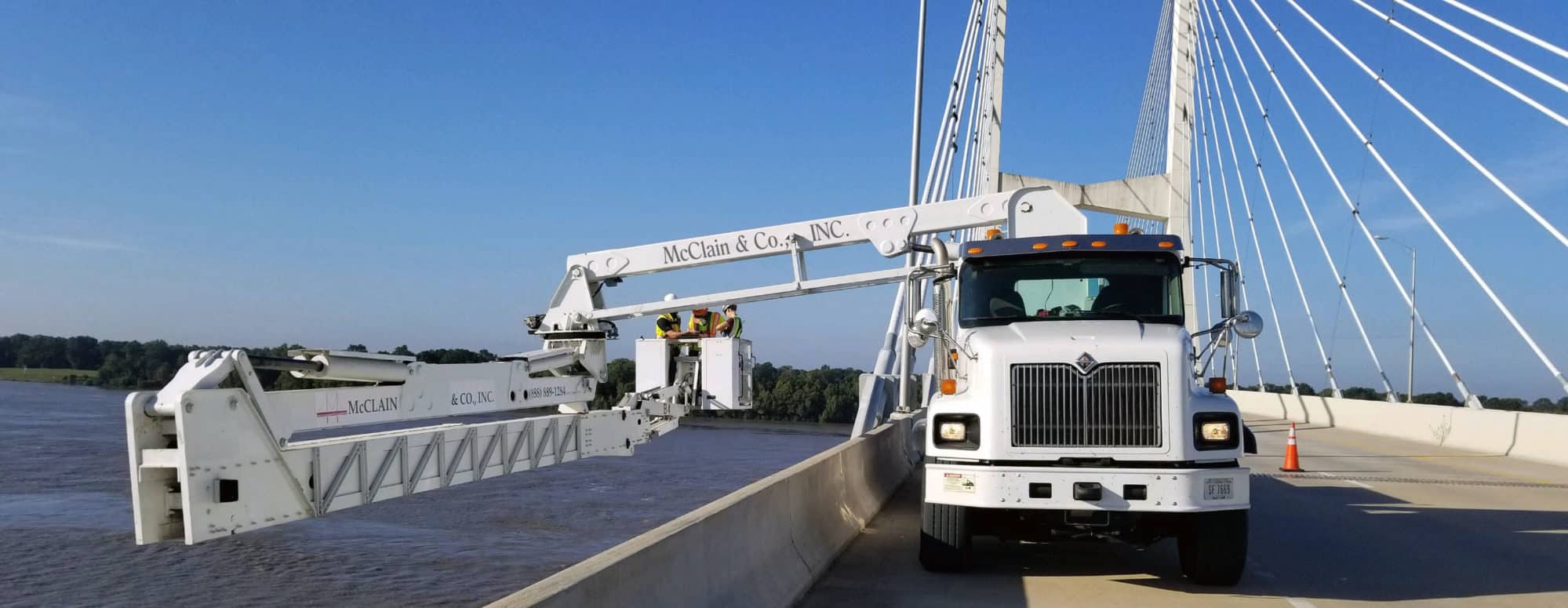There are many factors that affect and impact the implementation of regular highway bridge inspections and maintenance work.
Among these are economic factors, legislative changes, social and political trends, as well as the more immediate influence of weather and meteorological events. In addition, increased traffic and the added stress and road this can create can be an influencing factor, as well.
But few consider the potential impact of climate change on functions such as bridge inspections and maintenance tasks carried out by state DOTs and contractors.
However, many agencies, including the Environmental Protection Agency, have recognized the real potential for the disruption of our nation’s transportation infrastructure by climate change and the various climate threats it may impose.
Climate Change and Highway Roads and Bridges: Beyond Exposure to the Elements
For those working in the transportation industry, particularly in the field of highway maintenance, repair, and construction, the value and importance of our country’s transportation system is well understood.
Comprised of an infrastructure made up of airports, roads, bridges, train stations, bike trails, and pipelines, it supports the movement of our nation’s vehicles. Cars, trucks, buses, and trains on the roads and railways, and even the ships and aircraft involved in moving people and goods.
All of this is managed and maintained by a vast army of people, including equipment operators, maintenance workers, inspectors, engineers, designers, builders, and a variety of federal, state, and local transportation officials.
In short, the U.S. transportation system is essential to moving people and goods.
America’s public transportation system was born in 1806. As the Federal Highway Administration (FHWA) tells the story,
“The National Road, in many places known as Route 40, was built between 1811 and 1834 to reach the western settlements. It was the first federally funded road in U.S. history. George Washington and Thomas Jefferson believed that a trans-Appalachian road was necessary for unifying the young country. In 1806 Congress authorized construction of the road and President Jefferson signed the act establishing the National Road. It would connect Cumberland, Maryland to the Ohio River.”
And from that time onward, our expanding transportation system has been subject to the vagaries and assaults of the elements, severe weather conditions, and events such as flooding and wildfires.

As another passage from the FHWA website notes,
“In 1912 the definition of a “good” road was one that was graded. Most gravel and brick roads were found in the cities, leaving open roadways, in the pre-asphalt and concrete era, much to be desired.
America boasted 2.5 million miles of roads, but most roads were dirt and didn’t connect. These dirt roads were bumpy and dusty in dry weather and impassable in wet. Travel by train was easier when going from one town to another.”
After many false starts and bureaucratic wrangling, the national interstate system was launched in the latter half of the 1950s, a sweeping project spearheaded largely by then-President Eisenhower. And in Eisenhower’s 1963 memoir, Mandate for Change 1953-1956, he explained why this domestic program was his favorite,
“More than any single action by the government since the end of the war, this one would change the face of America. … Its impact on the American economy – the jobs it would produce in manufacturing and construction, the rural areas it would open up – was beyond calculation.”
And now, the American transportation system is facing a new and ominous threat: climate change.
Planning for the Impact of Climate Change on Bridge Inspections and Maintenance
The EPA, the U.S. Global Change Research Program, the U.S. Department of Transportation (USODT) and other entities and agencies have been analyzing and assessing the possible effects of climate change on the transportation system of America and, in particular, the safety and integrity of our roads and bridges.
As the EPA notes,
“Although the nation’s transportation system is built to withstand weather, climate change may affect this system over time. The impacts will vary by region. However, impacts in one region can readily affect another. For example, bridge damage in one place can cause road congestion in another. Changing water levels in one area may affect shipping nationwide.”
The importance of our transportation system goes beyond providing access and ease of travel.
Transportation services added close to $1.6 trillion to the U.S. gross domestic product in 2020. In addition, in that same year, it is estimated that more than 14 million people worked in transportation or related industries. This number represents 10 percent of the total U.S. workforce.
In light of the potential impacts of climate change, the cost of simply doing nothing will be massive. This is especially true if emissions continue to rise unchecked and the transportation infrastructure is not adapted to the effects of a changing climate.
Ignoring or dismissing the impact of climate change on the transportation industry could potentially cause hundreds of billions of dollars of damage per year by 2090. In addition, the climate change impact on transportation infrastructure, including functions such as bridge inspections and maintenance, is likely to disrupt the lives of millions of people who use U.S. roads and bridges every day.
Drawing on data from the National Oceanic and Atmospheric Administration (NOAA) and other sources, the EPA has stated that,
“Climate change impacts on transportation can also have wide economic effects. One positive impact is that warmer weather could lengthen the shipping season for some northern ports. Damage to the transportation system, however, can interrupt the supply chain at local, regional, and national levels.
In some coastal areas, more flooding is occurring as the sea level rises. Urban areas where there is a lot of pavement or where sewer systems cannot handle intense rainfall also are prone to flooding. Flooding disrupts the movement of commuters, tourists, and freight. People also need reliable transportation to get to their jobs. Extreme weather can disrupt transit options and damage roads, keeping people from getting to work.”
Climate Change: Challenging Our Ability to Maintain Highway and Bridge Safety
How will climate change impact infrastructure work?
The Fourth National Climate Assessment stated in its summary of findings that,
“Climate change and extreme weather events are expected to increasingly disrupt our Nation’s energy and transportation systems, threatening more frequent and longer-lasting power outages, fuel shortages, and service disruptions, with cascading impacts on other critical sectors.”
Some of these impacts include:
- Rising sea levels, increasing changes in precipitation, extreme weather events, and unseasonal heat. These hazards may affect transportation system performance, safety, and reliability.
- Rising sea levels and more extreme storms can lead to more storm surges and flooding in coastal regions, damaging roads, bridges, railways, ports, and coastal airports.
- Across inland regions, heavy rains can cause flooding and mudslides, impacting highways, railways, and bridges. This increased local flooding can damage roadways and tunnels and weaken roadway materials.
- Lack of rain and drought combined with extreme heat increases wildfire risks. Wildfires can damage transportation networks.
- The impacts of rising temperatures can be both immediate and long-lasting. Excessive heat affects runways, while hotter air can make it more difficult for airplanes to take flight. In addition, extreme heat can damage rail tracks and cause cracks in roads.
- Permafrost supports many roads, airport runways, pipelines, and railroads in Alaska. Warmer temperatures can also cause permafrost to thaw and weaken this critical infrastructure.
- Rural areas typically have fewer roads and transportation options than cities. A single damaged road or bridge can cut off people’s access to services and necessities. This can also create rural rebuilding challenges, such as being able to transport construction materials.

McClain and Company for Quality Bridge Inspection and Maintenance Equipment Rentals
McClain and Company places great value on our nation’s transportation system. And we are proud to provide ongoing support to the men and women who build, inspect, and maintain the roadways, railways, and bridges of our country.
This is one of the main reasons we are committed to providing our customers with very the best in service and equipment. And that means the service we provide on the “front end” as well as all we do “back end.” We also believe high-quality service means providing our customers with high-quality under bridge inspection equipment rentals and other services.
At McClain, we believe that offering quality under bridge and aerial access equipment rentals is just one way that we can ensure that our customer’s projects are successful. And this is critical for us as also believe that “Your success is our success.”
If you already know which type of under-bridge inspection equipment you need, we invite you to give us a call and ask us for a quote today. And, in many cases, we can even schedule your rental with us the same day.
In addition to offering an extensive and high-quality selection of under-bridge inspection units, McClain and Company also offers traffic safety equipment and highway construction-related services, as well as a wide variety of utility and aerial equipment rentals and Hi-Rail inspection equipment.
If you have questions about equipment rentals from McClain or want to learn more about under-bridge access equipment and under bridge inspection unit rentals, simply contact McClain & Co., Inc. by calling us at 1.888.889.1284 or emailing us at [email protected].


